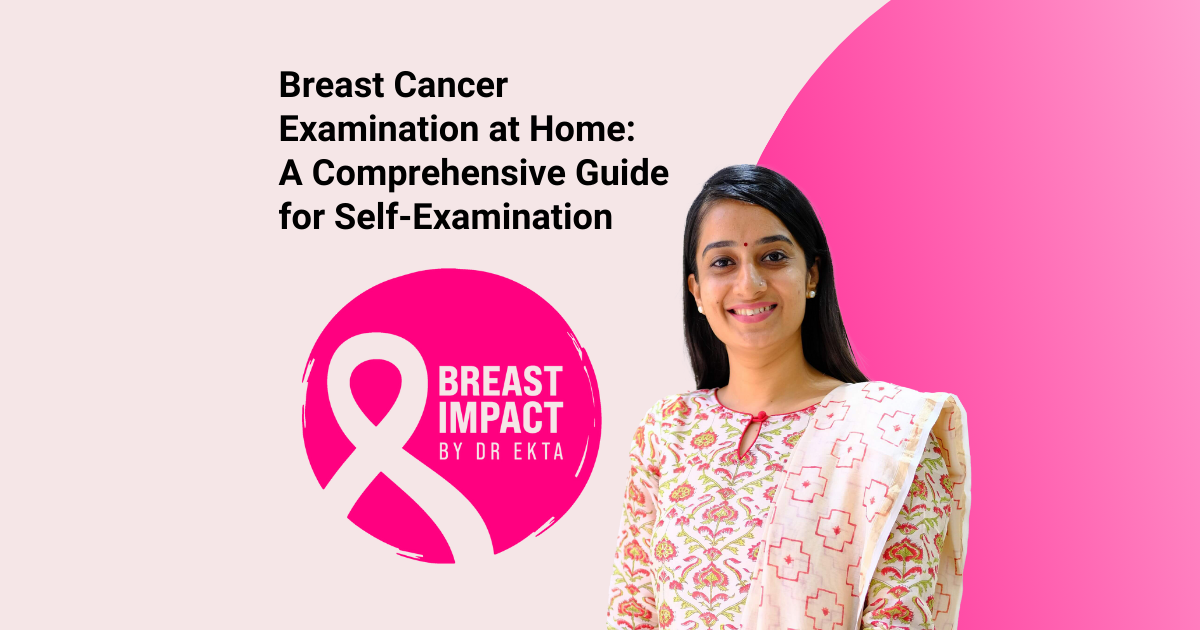As an oncologist, I have witnessed the profound impact that early detection can have on the prognosis and treatment of breast cancer. Early detection often means more treatment options, less aggressive therapies, and better outcomes. One of the most powerful tools in this fight against breast cancer is regular breast self-examinations. Today, I want to discuss how you can perform a Breast Cancer Examination at Home and why it is a crucial practice for every woman.
Why Breast Cancer Examination at Home is Important
Breast cancer is one of the most common cancers affecting women worldwide. While regular mammograms and clinical breast exams by healthcare professionals are essential, being proactive and conducting a Breast Cancer Examination at Home allows you to monitor your own body for any changes between your regular check-ups. Detecting changes early can lead to early diagnosis and treatment, potentially saving lives.
Understanding Breast Self-Examination
A Breast Cancer Examination at Home involves a systematic approach to examining your breasts for any unusual changes or lumps. It’s important to understand that not all lumps or changes indicate cancer, but identifying anything unusual early on allows you to seek medical advice promptly.
The Best Time for a Breast Cancer Examination at Home
The timing of your Breast Cancer Examination at Home is crucial for accuracy. The best time to perform the examination is a few days after your menstrual period ends, when your breasts are least likely to be swollen or tender. If you no longer have periods, choose a consistent day each month to perform the examination.
Step-by-Step Guide to Breast Cancer Examination at Home
Let’s walk through the steps for a thorough Breast Cancer Examination at Home:
1. Visual Inspection
Start by standing in front of a mirror with your shoulders straight and your arms on your hips. Look at your breasts in the mirror, checking for any visible changes such as:
- Changes in size, shape, or symmetry.
- Dimpling or puckering of the skin.
- Inverted nipples or changes in nipple position.
- Redness, rash, or swelling.
Next, raise your arms and look for the same changes while your arms are elevated. This step helps reveal any changes that might not be as noticeable when your arms are down.
2. Physical Examination in the Shower
Many women find it easier to examine their breasts while their skin is wet and slippery, making the shower an ideal place for this part of the Breast Cancer Examination at Home.
- Raise one arm, placing your hand behind your head to spread the breast tissue more evenly across your chest.
- Use the pads of your fingers to press gently around your entire breast in a circular motion, moving from the outside toward the nipple.
- Be sure to cover the entire breast area, including the armpit where breast tissue extends.
- Repeat the process on the other breast.
This part of the Breast Cancer Examination at Home helps you to feel for any lumps, thickened areas, or unusual textures. Remember that your breasts naturally have a lumpy texture, so it’s important to become familiar with what is normal for you.
3. Lying Down Examination
Another effective way to perform a Breast Cancer Examination at Home is while lying down. When you lie down, your breast tissue spreads evenly across your chest wall, making it easier to feel all parts of your breasts.
- Lie down on your back with a pillow under your right shoulder and your right arm behind your head.
- Use your left hand to examine your right breast, using the same circular motion you used in the shower.
- Be sure to use varying pressure levels—light, medium, and firm—to feel all layers of the breast tissue.
- Repeat on the left breast.
What to Look For During Breast Cancer Examination at Home
When performing a Breast Cancer Examination at Home, there are several signs and symptoms to be aware of:
- Lumps: A lump or thickening in the breast or underarm area is one of the most common signs of breast cancer. However, not all lumps are cancerous. Many women have lumpy breasts, and most lumps are benign. If you find a lump, it’s important to monitor it and consult with a healthcare provider if it persists or grows.
- Changes in Skin Texture: Look for any unusual changes in the skin’s texture, such as dimpling, puckering, or the appearance of an “orange peel” texture.
- Nipple Changes: Be aware of any changes in your nipples, such as inversion, discharge (especially if it’s bloody), or changes in the skin around the nipple.
- Swelling or Pain: While not as common, swelling or pain in the breast, armpit, or collarbone area can be a sign of breast cancer and should not be ignored.
What to Do If You Find Something Unusual
If you notice any changes during your Breast Cancer Examination at Home, it’s important not to panic. Many changes in the breast are not cancerous. However, it is essential to consult with a healthcare professional as soon as possible to rule out breast cancer or to begin treatment if necessary.
The Role of Mammograms and Professional Examinations
While a Breast Cancer Examination at Home is a powerful tool for early detection, it does not replace regular mammograms or clinical breast exams performed by healthcare professionals. Mammograms can detect breast cancer before it can be felt, and they play a crucial role in early diagnosis, particularly for women over 40 or those at higher risk.
How Often Should You Perform a Breast Cancer Examination at Home?
I recommend that women perform a Breast Cancer Examination at Home once a month. Regular self-examinations help you become familiar with the normal look and feel of your breasts, making it easier to notice any changes.
Encouraging Others to Practice Breast Cancer Examination at Home
As a healthcare provider, I cannot stress enough the importance of encouraging friends, family, and patients to practice regular Breast Cancer Examination at Home. Sharing this knowledge can empower more women to take control of their breast health, potentially leading to earlier detection and better outcomes.
Conclusion: Taking Charge of Your Breast Health
In conclusion, performing a Breast Cancer Examination at Home is a simple yet powerful way to take charge of your breast health. While it may seem like a small action, it can have a significant impact on your overall well-being. By incorporating this practice into your monthly routine, you are taking an active role in the early detection of breast cancer, which could make all the difference in your journey to health and wellness.
Remember, knowledge is power, and by knowing your body and understanding the importance of a Breast Cancer Examination at Home, you are empowering yourself with the tools to detect potential issues early and seek the appropriate care.
Stay vigilant, stay informed, and encourage the women in your life to do the same. Early detection saves lives, and it all starts with a simple examination at home.

